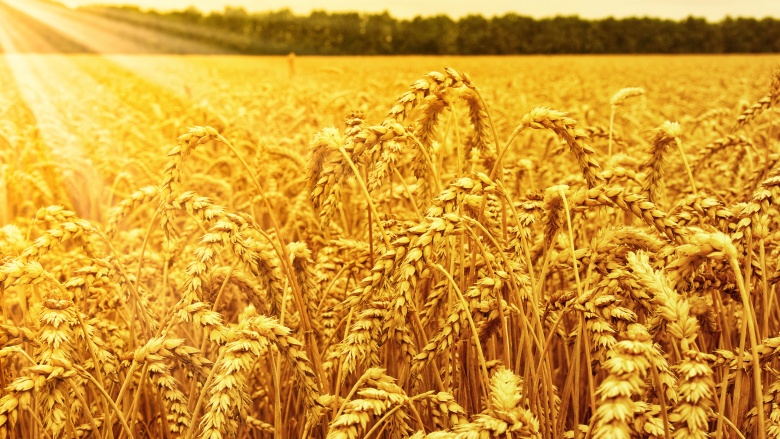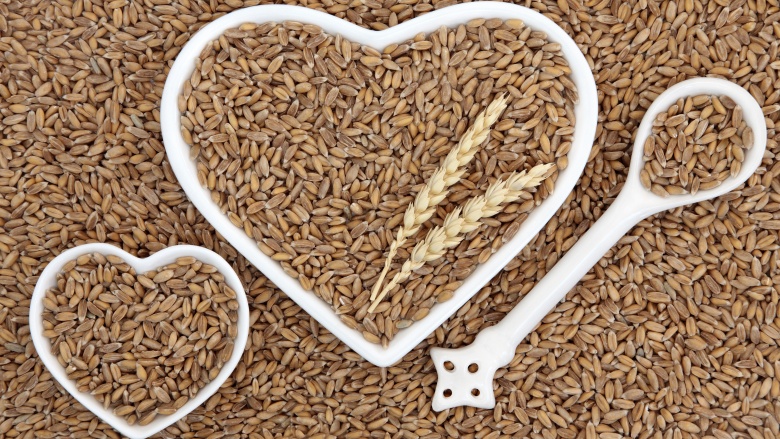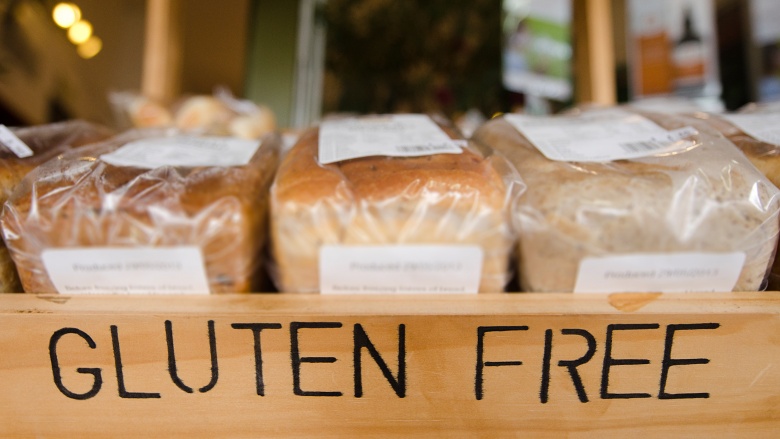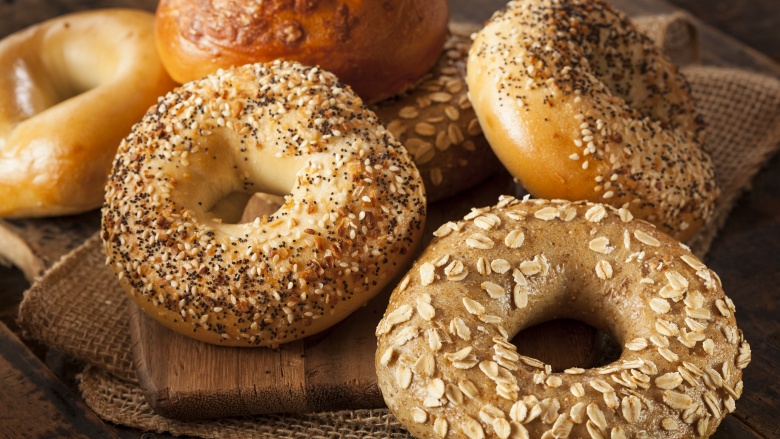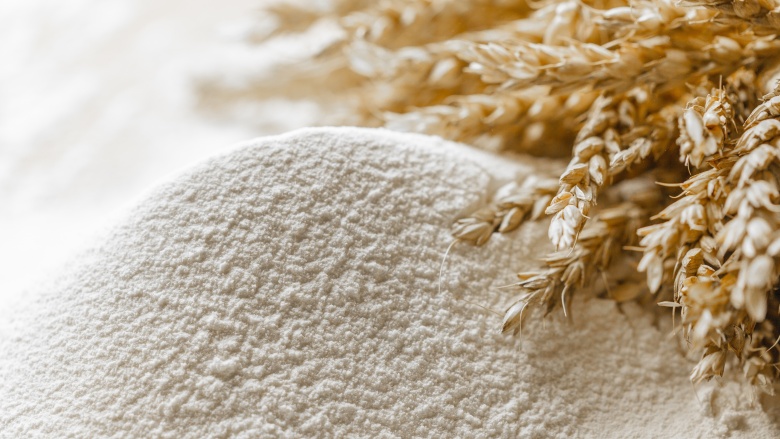Why You Don't Need To Be Afraid Of Gluten
When it comes to diet and lifestyle choices, gluten is a pretty polarizing topic. There are some people that have a medical reaction to gluten, and they avoid it out of necessity. More and more people are opting to cut it out of their diet altogether for a variety of reasons. Others might still be on the fence.
If you're one of those people who isn't sure whether gluten is good or bad, you're in the right place. We're going to take a look at some of the reasons why cutting it out of your diet might not just be unnecessary, but dangerous — and they're not reasons you might think.
We've been doing fine since since 9500 BC
Most recently, gluten and foods that contain gluten have been vilified as the source of many of mankind's problems. From weight gain to various gastrointestinal difficulties, gluten has been blamed for a whole host of ailments. While it's definitely bad for a small percentage of the population (about one percent have been professionally diagnosed with celiac disease), medical studies are still out on just what it means for the rest of us. But if history's anything to go by, it might not be as bad as we think.
When mankind made the shift to an agricultural society, wheat was one of the first crops to be domesticated. While unlocking the famous firsts of history is a tricky business, we do know one of the earliest (if not first) crops was einkorn wheat. It was planted both in the area that's now the Middle East and in Turkey, with evidence of large-scale farming dating back 10,000 years at the Turkish site of Gobekli Tepe. That's obviously a pretty big deal, and researchers have done a full genetic and DNA examination of just what these ancient grains looked like. They've found they absolutely did contain gluten, but it was a different type of gluten than what's found in most crops today. It all comes down to what's called the gliaden protein, and ancient einkorn has 14 chromosomes in this protein. In comparison, modern wheat has 42 chromosomes in the same protein.
That's been linked to modern man's sensitivity to gluten, but that's not the whole story. It's not enough of a difference that einkorn is officially approved for gluten-free diets, which is important for our next point.
Nothing's changed about gluten in recent times
If you're keeping up with the claims about just what it is that makes gluten so bad, chances are good that you've heard the idea that since those early days, wheat (and, in turn, gluten) have changed so much that they're not only unrecognizable, but unhealthy, too. Those claims insist this is something that's happened in the last century, but studies suggest there's something else at work and it's not actually the gluten itself that's the culprit.
In 2013, researchers from the US Department of Agriculture took a look at just how wheat has changed in recent history. They started with the idea that in contrast to early grains, wheat has been gradually bred for more desirable characteristics, like size. It's entirely possible that this selective breeding changed gluten, too, but it hasn't. While things like protein content did vary, the study also found there was no increase in gluten content. An increase in gluten is what was expected, though, based on the rise of the cases of celiac and gluten sensitivity in the decades since the condition was first linked to the reaction to gluten present in some people. While many people blame the changing face of agriculture and the selective breeding of crops for making us sick, science says the gluten we're eating is no different than the stuff our great-grandparents ate.
The numbers don't match
Here's another piece of evidence that suggests gluten isn't the scary thing it's often made into. That last study we talked about looked at just how much gluten we've been eating over the years. When it comes to wheat consumption, we peaked in 1900 with a per capita consumption of 220 pounds per person every year, and went on a steady decline until 1970s when we hit 110 pounds per person as an average. Consumption rose until 2000 (146 pounds), and that's when there was a sudden drop-off linked with the recent demonization of gluten. By 2008, average consumption was at 134 pounds per year, pretty close to what the numbers were in the 1970s.
If gluten is completely responsible for our various issues, the diagnosis of celiac and related conditions should follow at least a somewhat similar arc. They don't. Researchers from the Mayo Clinic took a look at blood samples drawn from more than 9,000 employees at the Warren Air Force Base between 1948 and 1954. They tested the samples for signs of celiac, and found that today we're four and a half times more likely to develop the condition than we were in the 1950s. While today, someone has a one percent chance of being diagnosed with celiac, the rate then was a mere .2 percent.
The numbers just don't match up, but what exactly does that mean? The science is still out, but study lead Joseph A. Murray (who is also the president of the North American Society for the Study of Celiac Disease) says he believes the problem has nothing to do with wheat or wheat genetics. Unfortunately, all of this just seems to create more questions than answers.
The original science is uncertain at best
So where did the whole "no gluten for the masses" movement get its start? One of the biggest supporters of the ideas is a cardiologist named Dr. William Davis. When he published Wheat Belly, it flew to the top of the NY Times Bestseller List, but other scientists and medical professionals say it just doesn't hold up to scrutiny.
The book is filled with many claims, including the idea that wheat has killed more people than war. He also says wheat and morphine have the same effect on the brain, that wheat has more of an impact on blood sugar than candy does, and that our modern wheat is as different from original wheat as humans are from chimpanzees. He writes that two slices of wheat bread raise the blood sugar more than two tablespoons of pure sugar, and that wheat is the leading cause of obesity, diabetes, heart disease, dementia, incontinence, and even gangrene. He even says it's the only type of food that has a confirmed mortality rate.
Those are massive claims to make, and most of Davis's evidence comes from his personal experience losing weight and reports from his patients. We've talked a little bit about how scientists have found we're eating the same type of wheat and gluten we've been eating for decades, so what about some of the other claims? Chemists from McGill University say there's no evidence for the morphine-like addiction that gluten is supposed to have. One study from the Harvard School of Public Health linked diets low in carbohydrates (and ultimately, gluten) with higher instances of a horrible thing called all-cause mortality. Conclusions were supported by a 2013 study that also found a high-carbohydrate diet wasn't linked to the development of heart disease, and still other, similar studies all seem to suggest that at the very least, the claims warrant further research.
Some gluten-filled foods have other amazing benefits
So, why else might you not want to shy away from foods that contain gluten? Some come with massive benefits. If you haven't heard of a grain called triticale, it's worth taking a look at. Somewhere between wheat and rye, triticale is the only grain that contains lysene, an amino acid the body needs for its protein intake. Bulger comes with gluten, but it also comes with B vitamins and a serving can contain about 10 percent of all the iron you need for the day. There's also spelt, which is a grain that's incredibly high in protein and dietary fiber. It's been shown to help improve insulin sensitivity in people both with and without diabetes, and a single cup contains more than 100 percent of your daily recommended intake of manganese, along with significant percentages of things like phosphorus and niacin.
There's another surprisingly good one, too: panko breadcrumbs. If you're looking for a healthy alternative to heavy batter and fat-filled fried foods, trade for some panko breadcrumbs and get the same crunch with none of the bad stuff.
Food labeled as "gluten-free" might contain gluten anyway
We all like to think what we're reading on labels tells us exactly what we're getting in a package of food. But the "gluten-free" labels you see on store-bought foods don't necessarily mean something is 100 percent gluten-free.
Until 2013, the guidelines on what could be labeled gluten-free were left largely up to chance. It wasn't until then the FDA issued a definite ruling on what specifications a product needed to meet in order to be labeled this way, and that law went into effect on August 5, 2014. The law specified a product could have no more than 20 parts per million (ppm) of gluten, and also that foods that naturally contained no gluten (like bottled water) could also be labeled gluten-free. Admittedly, 20 ppm is an incredibly tiny amount of gluten, but groups like the Gluten Free Society warn against the potential dangers of cross-contamination (and illness) in things like wooden cutting boards and even bins at the grocery store.
When you consider how much gluten could really be on those things that require a head's up, 20 ppm starts to sound like a lot. According to the FDA, that particular number was selected because that's the lowest level of gluten that can be detected with the laboratory equipment that's currently and widely available. When the rule was enforced, the FDA had found that up to 5 percent of foods that were being labeled as gluten-free contained more than that level of gluten, so if you were eating gluten-free before August 2014, you were likely eating more of it than you thought.
High-gluten flours can have some serious benefits
We hear all about the damage gluten reportedly does, but there's some good stuff your body can get, too. Gluten comes from a part of the wheat kernel called the endosperm, and high-gluten flours contain more of this part of the wheat stalk. It's gluten that gives certain types of bread particular characteristics, so if you've had a wonderfully chewy bagel, thank gluten.
High-gluten flour contains between 13 and 14.5 percent gluten — compare that to all-purpose flour, which has around eight to 11 percent gluten. Bakers will know the gluten content impacts how your bread behaves, and high-gluten flour is often used by artisan bakers to help bread hold a particular shape if it's being baked without a pan. That's definitely one benefit, but there are health benefits that come with high gluten, too. Gluten is incredibly high in protein, and in fact, it's as much as 80 percent protein. The CDC recommends between 46 and 56 grams as a daily requirement, and all that protein is going to help you stay healthy on a cellular level.
High-gluten flour also has important B vitamins, like vitamin B-3 for the regulation of hormones. A single serving gives you between 28 and 37 percent of what's recommended as a daily intake, and it's been shown to help us manage stress and turn other nutrients into an energy we can use. It's also high in folic acid, which also helps us convert food into energy and has been shown to contribute to emotional health, boost brain function, and it's instrumental in the construction of DNA and RNA strands. Not a bad deal for a bagel, right?
Your symptoms might be caused by another condition entirely
So, what if you read all that and you're still thinking you need to avoid gluten because of the way that it makes you feel? Here's some more food for thought.
Right now, there are no real tests for gluten sensitivity. It's basically a last-resort diagnosis, and although that might change in the future, it's a tricky sort of gray area right now. Jessica Biesiekierski, a Monash University researcher and gastroenterologist, wanted to see just how many people were accurately self-diagnosing a gluten sensitivity. She assembled her study and found that 63 percent of her volunteers had self-diagnosed or been diagnosed by another party she described as an "alternate health professional." Perhaps most suggestive there was something more going on here was the finding that 24 percent of the volunteers reported no change in the symptoms they were trying to alleviate with a gluten-free diet.
At the end of the study, she found it didn't seem to be gluten at all that was causing the gastrointestinal discomfort her volunteers complained of. Instead, she found the culprit was likely short-chain carbohydrates called fermentable, oligo-, di-, monosaccharides, and polyols, also called FODMAPs. When the volunteers' diets included high- or low-gluten content, there was no change in their symptoms. When FODMAPs were reduced, however, there was a difference — they started feeling better.
Biesiekierski says switching to a diet low in FODMAPs could make a big difference for some people who believe they have a gluten intolerance or gluten sensitivity, but are still struggling with symptoms after going gluten-free. She also stresses that if this is what's really the problem, people can do serious damage to their bodies at either end of the spectrum. If they really do have celiac (estimates suggest that for every one person diagnosed, another seven people aren't), they need to be diagnosed. If they don't have celiac, they could be cutting out the nutritional benefits of gluten while still eating what they're really sensitive to.
Scientists have found another allergen in wheat
There's also another potential villain here, too. Scientists have found that gluten might be an innocent bystander in the case of some people who develop symptoms virtually identical to celiac. Researchers from Johannes Gutenberg University in Germany found that the real culprit is another component of wheat called amylase-trypsin inhibitors, or ATIs. In some people, ATIs can cause things like inflammation of the tissues of the digestive tract, and the continued presence of ATIs can spread those symptoms to other tissues like the kidneys and even the brain. ATIs are also linked the to worsening of other conditions like rheumatoid arthritis, asthma, and inflammatory bowel.
If that sounds pretty serious, it is. Eventually, some people who are sensitive to the presence of ATIs can develop a type of non-celiac gluten sensitivity, and then gluten will be a problem even though it didn't cause the illness and wasn't the problem before. Another problem is diagnosing the condition, which contains some pretty vague symptoms like headaches and joint aches.
In conclusion, don't fear the gluten
Hopefully, this has all left you with a little food for thought. With a huge number of people going gluten-free, education is the best thing to have whether that means learning how to get your nutritional requirements elsewhere, or even deciding that gluten-free isn't for you. It's no small decision to make, and in some cases, self-diagnosing and going gluten-free might be pushing aside another illness or condition that could only get worse.
If you're suffering from any of the symptoms of celiac or gluten sensitivity, get checked by a medical professional. Those symptoms can include things like headaches and migraines, depression or anxiety, numbness in your extremities, bone pain, aching joints, or even recurring canker sores. Those are all lesser-known symptoms, and only about a third of celiac sufferers report the gastrointestinal issues that are typically thought to go along with them. But now you know that gluten might not be the bad guy for everyone, and there might actually be some really some really good things you get from it. After all, who doesn't love a bagel in the morning?



